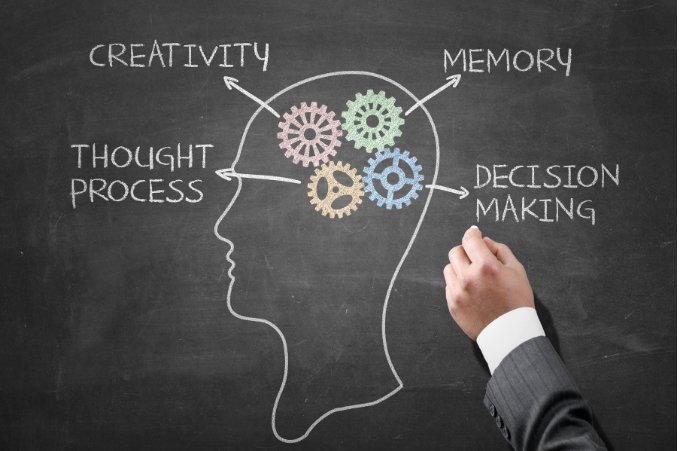Wandering Attention and ADHD: How daydreaming can help you relax and think creatively
 Many parents and teachers are concerned when they see children or teens daydreaming or spacing out. They wrongfully assume that daydreaming is not ‘productive’ and is therefore a waste of time. However, periodically letting your mind drift is actually good for you. It allows for creativity, exploration and rest that the brain doesn’t otherwise engage in. The importance of occasional attention wandering is something that author Daniel Goleman refers to as “open awareness.” It’s a way of perceiving your surroundings without getting caught up in the details; allowing your thoughts to wander freely and spontaneously. This wandering attention is how we come up with new ideas, find inspiration and problem-solve creatively–which is not only useful, but quite productive.
Many parents and teachers are concerned when they see children or teens daydreaming or spacing out. They wrongfully assume that daydreaming is not ‘productive’ and is therefore a waste of time. However, periodically letting your mind drift is actually good for you. It allows for creativity, exploration and rest that the brain doesn’t otherwise engage in. The importance of occasional attention wandering is something that author Daniel Goleman refers to as “open awareness.” It’s a way of perceiving your surroundings without getting caught up in the details; allowing your thoughts to wander freely and spontaneously. This wandering attention is how we come up with new ideas, find inspiration and problem-solve creatively–which is not only useful, but quite productive.
Focused Attention and “The Thinking Brain”
On our busy days, our brains spend most of the time purposefully assembling, managing and applying information while engaging in actions, behaviors and self-expression. We focus our attention on a variety of situations, people, problems and solutions. This focus results from interactions between three parts of the brain: lower, middle and frontal.

The lower brain works mostly out of our consciousness, monitoring sensory information and events in our environment.
The mid-brain monitors and processes emotions.
The frontal lobes, also called the prefrontal cortex, are often called ‘the thinking brain.’ It houses executive functioning skills like planning, organizing, sequencing, self-reflection and impulse control that push away distractions and point the mind on a single task or thought. The prefrontal cortex is the last part of the brain to develop at age 25 or so and is specifically affected by having ADHD. Of course, cultural norms, technology and trauma all affect our attention, as people learn to navigate through their lives, society and the world at large.
Wandering Attention and ADHD
 We are bombarded by information every moment of every day, which creates what Goleman refers to as the “neural buzz” in our brains. This ‘buzz’ can easily interrupt us and overwhelm our capacity to manage our focus through our ‘thinking brains.’ Children, teens and adults with ADHD have brain systems that are associated with creative mind-wandering. There is some thinking that ‘zoning out’ might actually be a time when innovative connections between new ideas are occurring.
We are bombarded by information every moment of every day, which creates what Goleman refers to as the “neural buzz” in our brains. This ‘buzz’ can easily interrupt us and overwhelm our capacity to manage our focus through our ‘thinking brains.’ Children, teens and adults with ADHD have brain systems that are associated with creative mind-wandering. There is some thinking that ‘zoning out’ might actually be a time when innovative connections between new ideas are occurring.
When we make space for wandering attention, we not only give ourselves more opportunity for creativity and connection, we also help minimize that persistent and overwhelming ‘neural buzz.’ Moreover, open awareness and mind drift are powerful tools for boredom relief and metacognitive thinking.
Ways to help your mind wander
So, what does this mean for you and/or your child? Simply put, allow for some down time—time when the brain can free-associate and take a break from the demands of technology, relationships, academics and performance. This time is critical for balance. Here are a few suggestions:
1. Create technology-free time
Use technology-free time for whatever else you or they want to do–including, and especially, nothing. Set limits for this time if your child is struggling with ‘doing nothing.’ Consider making a list of ‘nothing’ activities that foster brain breaks. Examples of low dopamine activities are reading, listening to music, playing in the yard and taking a walk.
2. Explore the great outdoors
Spending time in nature is one of the best ways to let your mind rest and your body recharge. The key is to pick an activity that you enjoy or your family enjoys doing together. Hiking, biking, swimming and canoeing are all wonderful activities. If your child prefers something less active, bring a picnic lunch to the park, fly a kite, build a snowman or gather shells at the beach.
3. Play with a pet

Playing with pets is a fun way to unplug and unwind. Most kids have a natural affinity with animals, and walking a dog or taking care of a pet for a weekend can be an uplifting experience for people of all ages. If you or your family doesn’t have a pet, ask a friend, relative or neighbor who does.
4. Meditate
Older children and teens may find meditation beneficial. With enough practice, it can alleviate stress at the end of a busy day, or help them stay calm before an exam or musical recital. Meditation is a particularly helpful tool for parents–often helping with regaining perspective in times of stress, increasing self-awareness and practicing patience. Fortunately, there are now a myriad of guided meditation apps and videos you can try to help you practice on occasion or in a new routine.
 We benefit in many ways from zooming out and letting our minds wander. In the same way we feel recharged after a good vacation or a relaxing day at home, we need to give our minds a break from the constant buzzing. Find an activity or two which will help you take a break and kick back. A little bit of doing nothing is sometimes better than constantly doing something.
We benefit in many ways from zooming out and letting our minds wander. In the same way we feel recharged after a good vacation or a relaxing day at home, we need to give our minds a break from the constant buzzing. Find an activity or two which will help you take a break and kick back. A little bit of doing nothing is sometimes better than constantly doing something.
Read more blog posts:
- ADHD and Metacognition: Learning to reflect on your thoughts and experiences with a growth mindset
- Celebrate ADHD Awareness Month by Accepting the Wonderful Uniqueness of Living with ADHD
- Social Anxiety and ADHD: How to better manage anxiety with supportive planning and preparation
Learn more at Dr. Saline’s YouTube Channel!
Sources: Goleman, D. (2015). Focus: The hidden driver of excellence. Harper.
